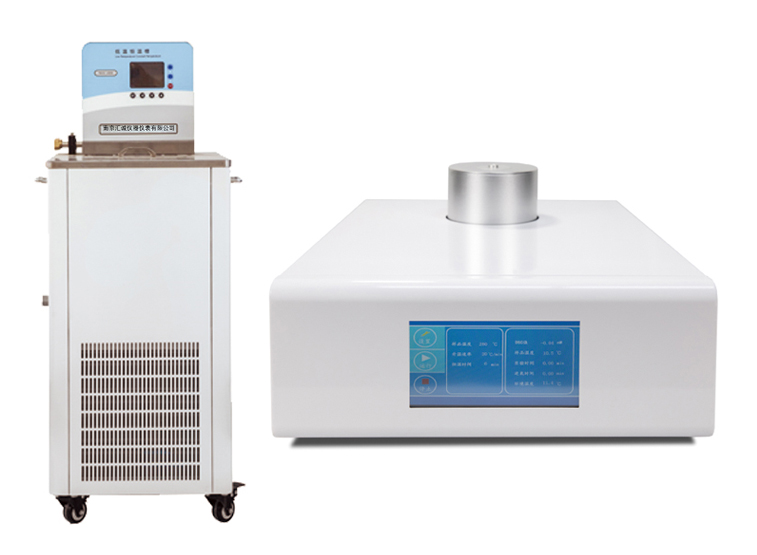Dispersion of carbon black in polyethylene geomembrane
- Time:2020-06-19 09:00
- Source:未知
- popularity:
Geomembrane is a kind of polymer membrane material which is used for waterproofing and has very low permeability in engineering. Its hydraulic conductivity is very low, usually in 10 ~'3 ~ 10 "2S, which is an ideal anti-seepage material. Compared with the traditional waterproof materials, the geomembrane not only has excellent impermeability, but also has the advantages of good flexibility, strong deformation adaptability, high strength, easy overall connection construction and so on.
Among all kinds of geomembrane products, polyethylene geomembrane, especially medium and high density polyethylene geomembrane, has better comprehensive performance, excellent anti-seepage performance, high strength, large elongation, good low temperature flexibility, light weight, good welding performance, convenient construction, etc. Therefore, the medium and high-density polyethylene geomembrane is more and more widely used in many fields, including municipal waste sanitary landfill, mine heap leaching pond and tailings treatment, chemical plant anti-seepage, petrochemical tank farm anti-seepage, advanced water projects, high-speed road construction and other important construction projects.
Due to the harsh environment in the application field of medium and high density polyethylene geomembrane, it has been exposed to various chemicals and direct sunlight for a long time, so people are very concerned about its aging resistance. In order to improve the UV resistance of polyethylene geomembrane, carbon black was added to the geomembrane. The addition of carbon black can inhibit the degradation of polyethylene under UV. In order to resist UV, carbon black should reach a certain content (usually 2.0% ~ 3.0%) in the polyethylene geomembrane, and be evenly dispersed. In order to understand the dispersion degree of carbon black in polyethylene geomembrane, it is necessary to test it. ASTM d5596-2003, ISO 18553-2002 and GB / T 18251-2000 [|_ 3] Wait. According to ASTM d5596-2003, the dispersion of carbon black in polyethylene geomembrane was tested, and the problems encountered in the test were discussed. In this paper, the dispersion degree of carbon black in the samples prepared by hot pressing method and cold cutting method is examined.Click file download
Among all kinds of geomembrane products, polyethylene geomembrane, especially medium and high density polyethylene geomembrane, has better comprehensive performance, excellent anti-seepage performance, high strength, large elongation, good low temperature flexibility, light weight, good welding performance, convenient construction, etc. Therefore, the medium and high-density polyethylene geomembrane is more and more widely used in many fields, including municipal waste sanitary landfill, mine heap leaching pond and tailings treatment, chemical plant anti-seepage, petrochemical tank farm anti-seepage, advanced water projects, high-speed road construction and other important construction projects.
Due to the harsh environment in the application field of medium and high density polyethylene geomembrane, it has been exposed to various chemicals and direct sunlight for a long time, so people are very concerned about its aging resistance. In order to improve the UV resistance of polyethylene geomembrane, carbon black was added to the geomembrane. The addition of carbon black can inhibit the degradation of polyethylene under UV. In order to resist UV, carbon black should reach a certain content (usually 2.0% ~ 3.0%) in the polyethylene geomembrane, and be evenly dispersed. In order to understand the dispersion degree of carbon black in polyethylene geomembrane, it is necessary to test it. ASTM d5596-2003, ISO 18553-2002 and GB / T 18251-2000 [|_ 3] Wait. According to ASTM d5596-2003, the dispersion of carbon black in polyethylene geomembrane was tested, and the problems encountered in the test were discussed. In this paper, the dispersion degree of carbon black in the samples prepared by hot pressing method and cold cutting method is examined.Click file download
Recommendations
- 2020-06-23Test of enthalpy of melting and crystallization of non ferrous materials differen
- 2020-06-22Test of induction period of polyolefin oxidation
- 2020-06-19Dispersion of carbon black in polyethylene geomembrane
- 2020-06-18The advantage of DSC in analyzing the crystallization rate of polypropylene
- 2020-06-16Determination of thermal stability (oxidation induction period) of plastics indus
- 2020-06-16Application of thermal analysis in polymer materials
- 2020-06-16Application of differential scanning calorimeter (DSC) in drug analysis
- 2020-06-15The application of DSC method in curing degree test of thermosetting resin
Recommended products
-
 DSC-600C Differential Scanning
Differential Scanning Calorimetry (Heat Flow DSC), as a classical therm...
DSC-600C Differential Scanning
Differential Scanning Calorimetry (Heat Flow DSC), as a classical therm... -
 DSC-600C Differential Scanning
Differential Scanning Calorimetry (Heat Flow DSC), as a classical therm...
DSC-600C Differential Scanning
Differential Scanning Calorimetry (Heat Flow DSC), as a classical therm... -
 DSC-600C Differential Scanning
Differential Scanning Calorimetry (Heat Flow DSC), as a classical therm...
DSC-600C Differential Scanning
Differential Scanning Calorimetry (Heat Flow DSC), as a classical therm... -
 DSC-600C Differential Scanning
Differential Scanning Calorimetry (Heat Flow DSC), as a classical therm...
DSC-600C Differential Scanning
Differential Scanning Calorimetry (Heat Flow DSC), as a classical therm...
Solution
hot-sale product
contact us
- Nanjing Huicheng Instrument Co., Ltd
- Service hotline:025-52702696
- after-sale service:025-52702696
- E-mail:njhcyq@163.com
- Company address:Building 3, runjing Technology Plaza, No.9, Tianhang West Road, Jiangning District, Nanjing

